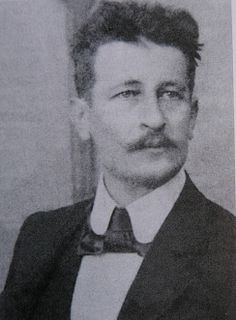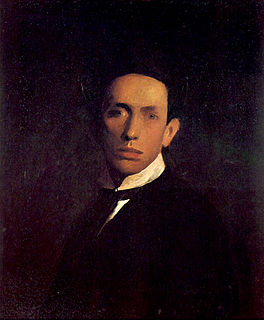 W
WOskar Artur Alexander was a Croatian academic painter and professor.
 W
WVlaho Bukovac was a Croatian painter and academic. His life and work were eclectic, for the artist pursued his career in a variety of locales and his style changed greatly over the course of that career. He was the court painter for Obrenović dynasty and Karađorđević dynasty.
 W
WBela Čikoš Sesija was a Croatian Symbolist painter, art teacher and one of the founders of the Academy of Fine Arts in Zagreb.
 W
WMenci Clement Crnčić was a Croatian painter, printmaker, teacher and museum director. He studied painting and drawing in Vienna and Munich, and trained in graphic arts in Vienna, studying etching and engraving. He was the first artist in the Croatian graphic tradition to abandon a strictly linear style and use tonal variation to create contrasting areas of light and shade.
 W
WHugo Conrad von Hötzendorf was a Croatian painter and art instructor of German ancestry .
 W
WOton Iveković was a Croatian painter. A graduate of Academy of Fine Arts in Vienna, Iveković later taught at the Zagreb Academy of Fine Arts. He largely concerned himself with historical topics as well as some religious themes. Many of his paintings remain the chief representations of Croatian history.
 W
WIgnjat Job was an important representative of colour expressionism in the art scene of Yugoslavia during the 1930s. Job's landscapes of Dalmatia are reminiscent of the style of Van Gogh. He is best known for his series of paintings inspired by life on the island of Brač. Job said that “the beneficial influence of the Brač landscape can be felt, the hot sun, blue sea, and green branches of olive trees swayed by the breath of the maestral”. His paintings depicted the Mediterranean landscape, motifs of the town of Supetar, fishing themes, and more rarely portraits and nudes.
 W
WVjekoslav Karas was a Croatian painter, considered a pioneer of a new era of Croatian painting and art in general.
 W
WMira Klobučar was Croatian painter.
 W
WMiroslav Kraljević was a Croatian painter, printmaker and sculptor, active in the early part of the 20th century. He is one of the founders of modern art in Croatia.
 W
WIzidor (Iso) Kršnjavi was a Croatian painter, art historian, curator and politician.
 W
WMato Celestin Medović was a Croatian painter. Best known for his large paintings depicting historical scenes, and his series of colourful landscapes and seascapes of his native Dalmatia, Medović is one of the earliest modern Croatian painters.
 W
WFerdinand (Ferdo) von Quiquerez-Beaujeu was a Croatian painter of French ancestry.
 W
WJosip Račić was a Croatian painter in the early 20th century. Although he died very young, and his work was mostly created during his student years, he is one of the best known modern Croatian painters. Today, Račić is regarded as one of the most important representatives of Croatian modern painting.
 W
WMirko Rački was a Croatian painter.
 W
WSlava Raškaj was a Croatian painter, considered to be the greatest Croatian watercolorist of the late 19th and early 20th century. Deaf since birth, Raškaj was schooled in Vienna and Zagreb, where her mentor was the renowned Croatian painter Bela Čikoš Sesija. In the 1890s her works were exhibited around Europe, including at the 1900 Expo in Paris. In her twenties Raškaj was diagnosed with acute depression and was institutionalised for the last three years of her life before dying in 1906 from tuberculosis in Zagreb. The value of her work was largely overlooked by art historians in the following decades, but in the late 1990s and early 2000s interest in her work was revived.
 W
WIvan Tišov was a Croatian painter. He studied art at the Academy of Fine Arts, Munich, bringing back ideas from the Munich Secession movement to Zagreb. He is best known for his work in public and government buildings in Zagreb, and paintings in churches in his native Slavonia in north-east Croatia.
 W
WAdolf Ignjo Waldinger was a painter from Osijek, Croatia. He was a member of Osijek's Bürgerliche Zeichenschule drawing school.